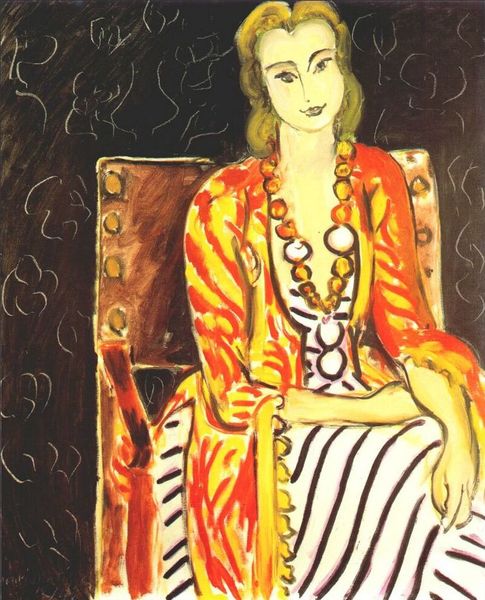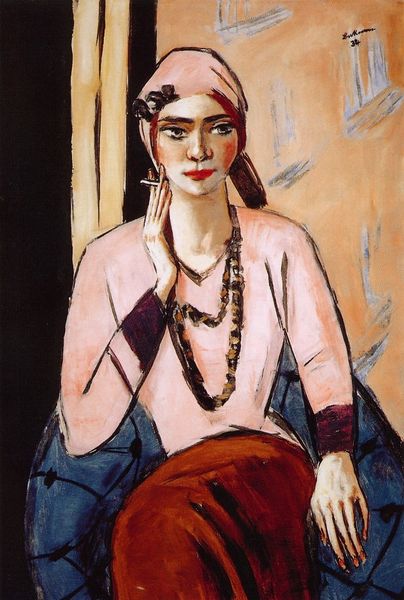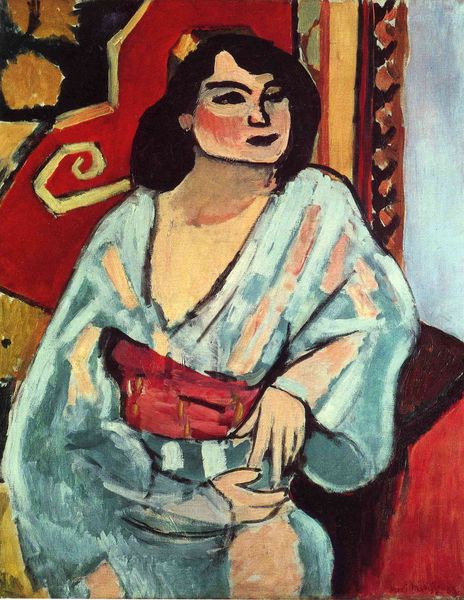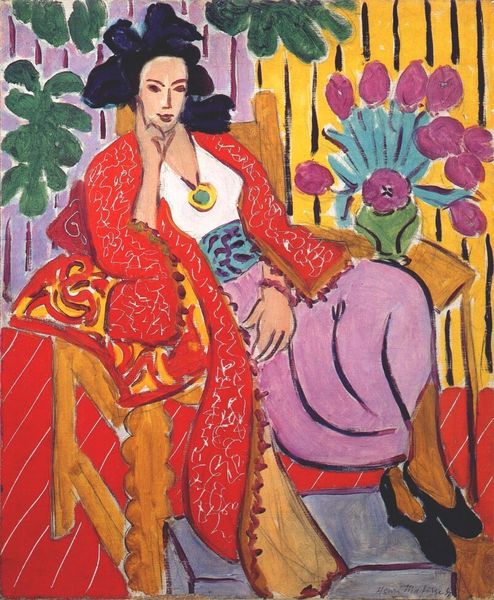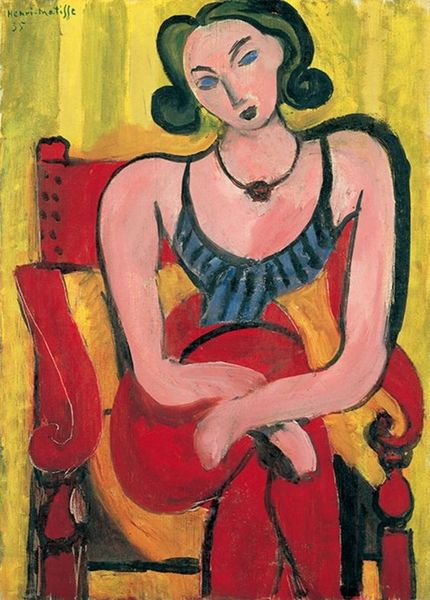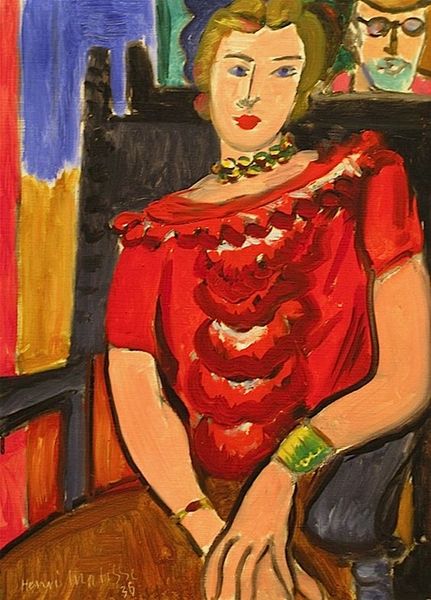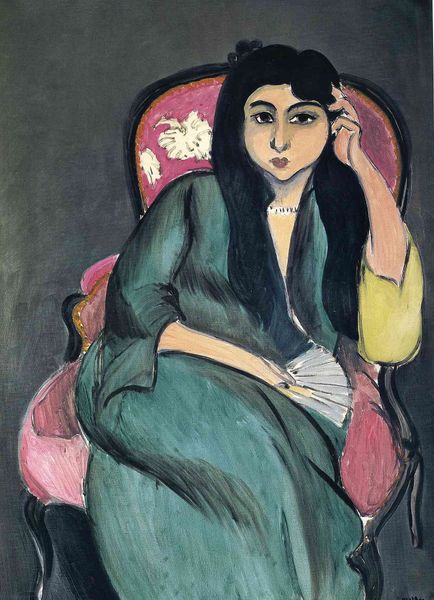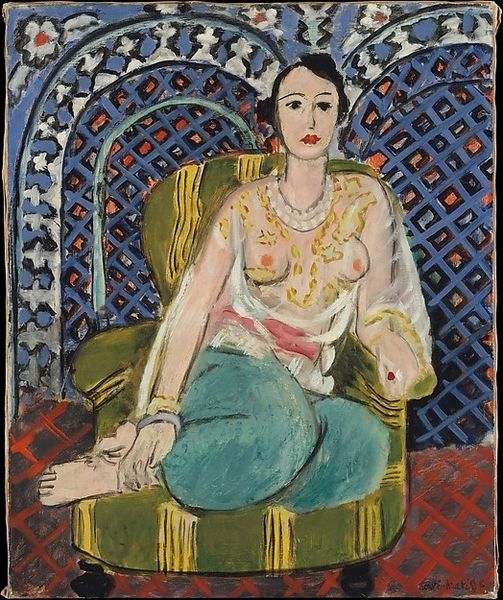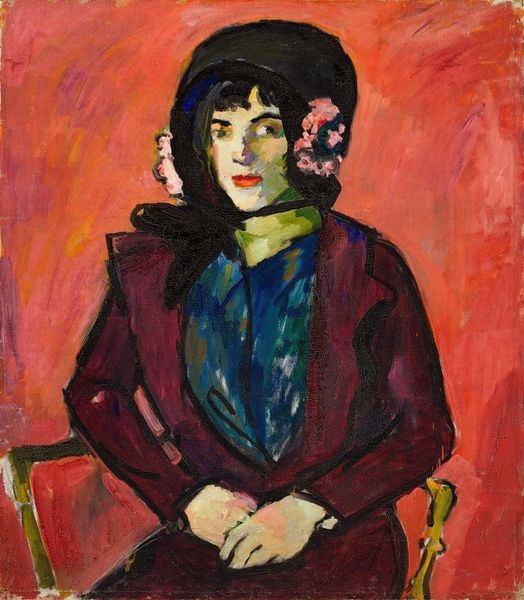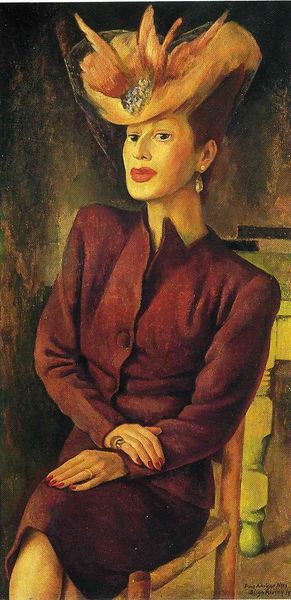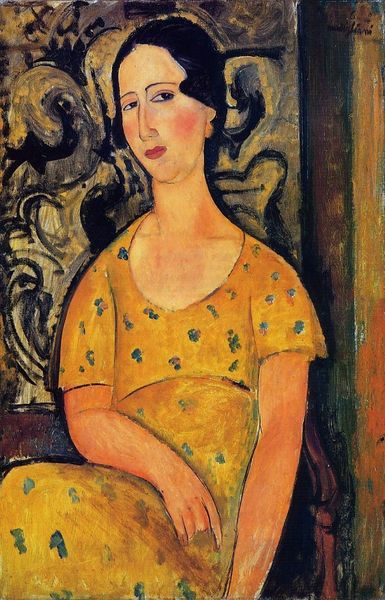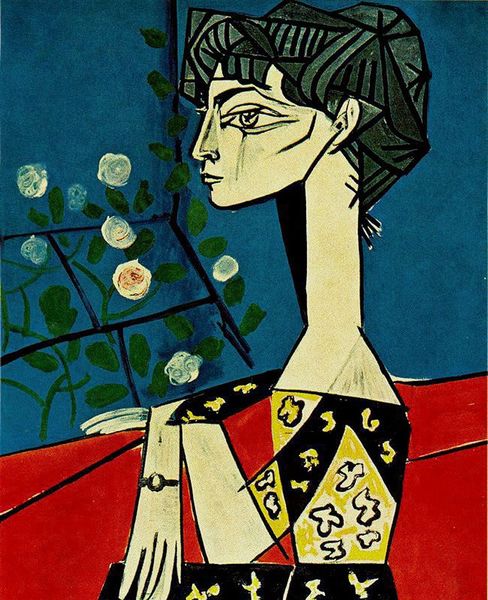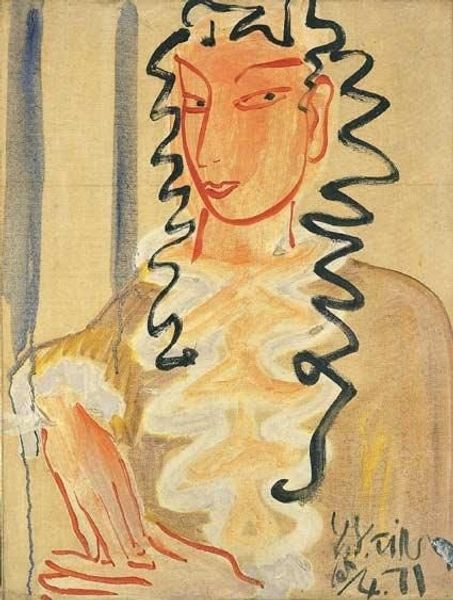
Copyright: Henri Matisse,Fair Use
Editor: This is "The Amber Necklace" by Henri Matisse, painted in 1937. It's an oil painting, and the figure, the model, seems so directly posed. What's most striking to you about it? Curator: I’m immediately drawn to the relationship between labor and leisure that this piece presents. The careful rendering of the fabrics - the embroidered jacket, patterned blouse, even the amber necklace itself - all speak to production processes. Who made these items? What were their working conditions? Editor: So you're focusing on the materials and their origin. That's interesting. Curator: Exactly. The visible brushstrokes in the oil paint are themselves evidence of the artist's labor. Matisse is quite intentionally making visible the labor and process of art making. Consider the juxtaposition of these carefully rendered details alongside the abstract forms in the background – a flattening of perspective. Does that offer any cues to you? Editor: Maybe he’s commenting on the artificiality of the scene. A blurring, or even rejection, of boundaries. Curator: Precisely. What becomes important, from a materialist point of view, are these tensions – the way Matisse plays with these contradictions. Editor: I never considered analyzing a portrait in this way, thinking about the socio-economic implications behind what's literally on the surface. It's changed how I see Matisse’s work. Curator: Indeed. Looking at the work through the lens of material conditions reveals a whole other layer of meaning, encouraging us to think critically about consumption, production, and the role of art in representing those dynamics.
Comments
No comments
Be the first to comment and join the conversation on the ultimate creative platform.
